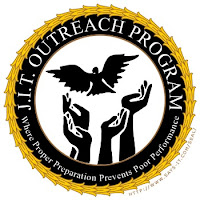Numerous studies have examined the conditions of confinement & issues faced by juveniles in adult facilities. Research has shown that juveniles in adult facilities are at much greater risk of harm than youth housed in juvenile facilities. The suicide rate for juveniles held in jails is five times the rate in the general youth population & 8 times the rate for adolescents in juvenile detention facilities (Community Research Center, 1980).
Forst & colleagues (Community Research Center 1989) reported that, although youth in adult and juvenile facilities were equally likely to be victims of property crime while incarcerated, juveniles in adult facilities were more likely to be violently victimized. In 1988, 47% of juveniles in prisons (compared with 37% of youth in juvenile facilities) suffered violent victimization, including violence at the hands of staff. Sexual assault was 5 times more likely in prison, beatings by staff nearly twice as likely, & attacks with weapons were almost 50% more common in adult facilities. Clearly, safely housing juveniles in adult facilities & protecting younger inmates from predatory, older inmates are important issues for correctional administrators.
Policy Issues Addressed by the Study
The growing number of juveniles admitted to adult facilities raises a number of important questions for correctional administrators & policymakers. This research provides key information for decision makers by documenting the number & profiles of youth in adult facilities, the legal & administrative processes by which they are waived to the adult court system, the issues faced by adult correctional systems handling juveniles, & those faced by juveniles who are confined in adult facilities. The specific questions to be answered by this project are as follows:
- What is the extent of confinement of juveniles in federal, state & local facilities? What is the legal basis for allowing juveniles convicted as adults to be committed directly to the adult system?
An updated national census is presented of those states permitting juveniles to be charged & convicted as adults, housed during pretrial status in adult pretrial facilities (jails), & sentenced to adult facilities (prisons or jails). Moreover, a summary of recent legislation adopted by the states is provided.
- What types of adult facilities are used to house juveniles & what is the legal basis for such commitments?
Juveniles are confined in a wide variety of adult facilities. Juveniles, if charged as adults (and for other reasons), can be housed in adult facilities awaiting the court’s disposition. As shown earlier, a far greater number of juveniles are admitted to jails than to state & federal prison facilities. Youth may be placed in jails because they are being prosecuted as adults or because the jurisdiction does not have a juvenile facility for those who require secure confinement while awaiting the court’s final disposition of the charges. Distinctions in the legal basis for placing juveniles in adult correctional facilities are discussed.
- What happens to juveniles in the adult system? Are they placed in separate areas or allowed to be housed with adults?
Sight & sound separation of adults & juveniles at all stages of judicial processing is mandated by Congress for all states under the Juvenile Justice & Delinquency Prevention Act (JJDPA) of 1974, as amended. This report examines to what degree & under what circumstances this mandate is adhered to when minors are sentenced as adults. Further, the ability of mixed-age facilities to provide required programs & services to minors while maintaining separation from adults is discussed.
- Do juveniles in adult facilities receive unique treatment, education, job skills training, & other services?
Despite being placed in adult facilities, minors retain special civil rights to education, vocational training, & other services that may require additional or special programs. These rights have consequences in staffing & access to appropriate programs that are responsive to the developmental, physical, social, psychological/emotional, educational, & family needs that are unique to adolescents.
- Does the presence of minors in a mixed-age facility pose unique management problems with respect to disciplinary incidents?
Practitioners have often asserted that younger offenders are more difficult to manage than older inmates. In some jurisdictions, attempts have been made to house youth with older inmates who will provide a calming influence on juveniles, especially those with long sentences. However, research has shown that juveniles in adult populations are more likely to commit suicide & to be victims of violence & sexual assaults. Transferred juveniles create new problems for the adult corrections system, including development of treatment & reintegrative services & protection from predatory inmates. The way in which these disciplinary issues are managed is a key discussion.
- What are the alternative strategies for housing juvenile offenders sentenced to long terms in adult facilities?
Some juveniles convicted of violent crimes are now facing extremely long, life, or death sentences. This bleak future may create additional disciplinary & mental health issues that must be managed by correctional administrators & staff.


No comments:
Post a Comment
Thank You!! Your comment has been submitted!!